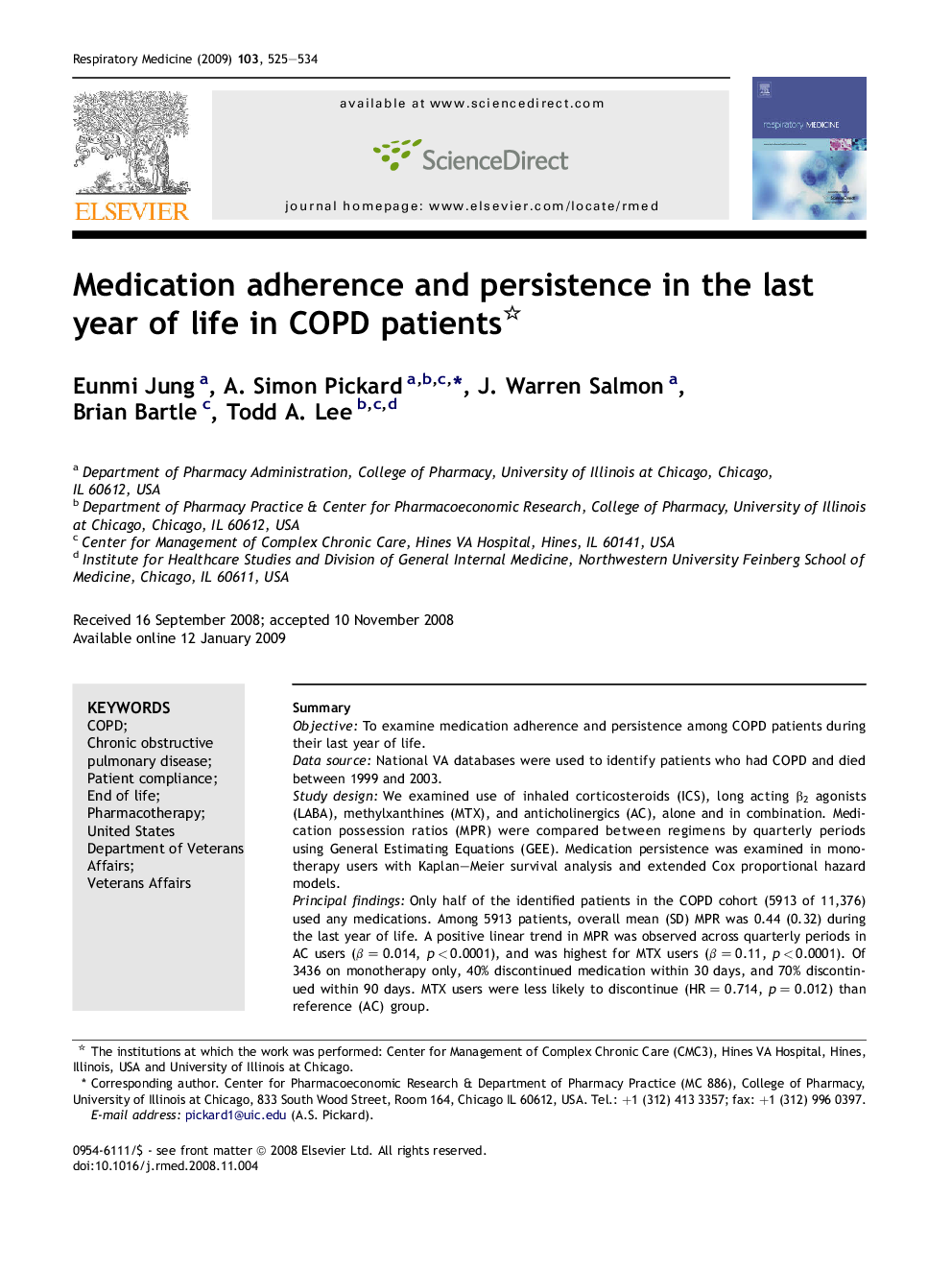| Article ID | Journal | Published Year | Pages | File Type |
|---|---|---|---|---|
| 4210913 | Respiratory Medicine | 2009 | 10 Pages |
SummaryObjectiveTo examine medication adherence and persistence among COPD patients during their last year of life.Data sourceNational VA databases were used to identify patients who had COPD and died between 1999 and 2003.Study designWe examined use of inhaled corticosteroids (ICS), long acting β2 agonists (LABA), methylxanthines (MTX), and anticholinergics (AC), alone and in combination. Medication possession ratios (MPR) were compared between regimens by quarterly periods using General Estimating Equations (GEE). Medication persistence was examined in monotherapy users with Kaplan–Meier survival analysis and extended Cox proportional hazard models.Principal findingsOnly half of the identified patients in the COPD cohort (5913 of 11,376) used any medications. Among 5913 patients, overall mean (SD) MPR was 0.44 (0.32) during the last year of life. A positive linear trend in MPR was observed across quarterly periods in AC users (β = 0.014, p < 0.0001), and was highest for MTX users (β = 0.11, p < 0.0001). Of 3436 on monotherapy only, 40% discontinued medication within 30 days, and 70% discontinued within 90 days. MTX users were less likely to discontinue (HR = 0.714, p = 0.012) than reference (AC) group.ConclusionCOPD patients in their last year of life tended to use respiratory medications sporadically. Further research is needed to qualify whether minor differences in MPR between regimens reflect behavioral differences related to regimen or reflect refill policy and MPR calculation technique.
